Developed by Rajni Bhargava (YHS Fulbright-Hays 2022)
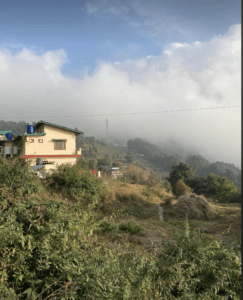
Proficiency Level: Novice Mid/High
Time: 8 X 75 min
Objectives: Students will be able to:
- list rooms and objects in the room
- describe the location around the house
- describe what family members do in the rooms
Performance Task: Project. My house, location and family. Students will work in pairs and distribute the responsibilities and the recording equally.
Instructions: Imagine your family in Nainital agreed to host an exchange student in your home in an area of your choice. You need to send a video of approximately 3-4 minutes. to that student showing and describing the house and the yard in detail using adjectives using cultural objects found specifically there, what is in the rooms and where (using postpositions), what you and your family usually do there, mention the members of the family, etc.
Language Targets: Students will be able to use:
- ask questions with kyaa and kahaaN
- use simple postpositions: meiN, par, ke paas, se duur
- use demonstrative pronouns: yah, vah > ye, ve
- use adjectives like baRaa, choTaa, gandaa, saaf, kacchaa, pakkaa
use compound post postpositions: ke andar, ke baahar, ke upar, ke niiche - use of singular/plural, masculine/feminine, use of oblique
- use habitual tense, verb root +taa, te, tii, kartaa, karte, kartii
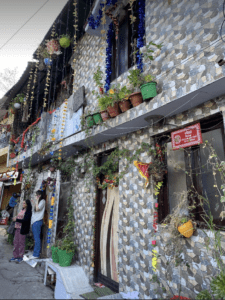 Episode 1. Students watch a youtube video to be introduced to the terms used for different parts of the house. http://hindistartalk.lrc.columbia.edu/lesson/rathore-family-our-home/ Students in groups watch the video and note down the names of the rooms in the house.
Episode 1. Students watch a youtube video to be introduced to the terms used for different parts of the house. http://hindistartalk.lrc.columbia.edu/lesson/rathore-family-our-home/ Students in groups watch the video and note down the names of the rooms in the house.
Episode 2: They are given a jumbled list of words related to the house. In pairs students are assigned a task to categorize the words in four or five different categories. Students play a game on quizlet/ or kahoot to reinforce the vocabulary. (https://quizlet.com/527949153/language-flash-cards/?x=1qqt)
Episode 3: Students are divided into two teams. They play relay races. They are asked to review the vocabulary related to house and the rooms and the objects in the rooms. One member from each team comes in front and writes on the board the vocabulary words related to house and the team which finishes within the given time with the most words wins. The spelling of the word is also counted.
Episode 4: Students read a story, https://storyweaver.org.in/stories/206-mera-ghar. Students are assigned a group to read and audio record individually the story in parts:
- Group 1: pages 1-5
- Group 2: pages 6-10
- Group 3: pages 11-16
Students are asked to work in their groups, to come up with categories, draw a table and write the unfamiliar words in the appropriate column (included are nouns, verbs and post positional phrases).
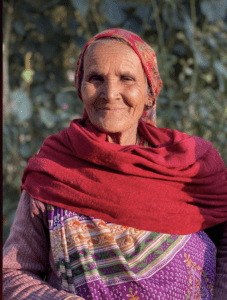
Teacher provides them with a vocabulary list from the story:
- यहाँ – here
- पूरे परिवार के साथ – with the whole family
- रहना – to live
- उतारना – to take down
- हाथ – मुँह (m.) – hands – face
- धोना – to wash
- अपने कपड़े (m.) – own clothes (that belong to the subject)
- खूँटी (m) – hook
- टांगना – to hang
- छड़ी (f.)- stick for walking
- कोने में – in the corner
- रखना – to keep
- चटाई (f.) – straw mat
- लेकिन – but
- माँ – mom
- दादी – grandmother from father’s side
- स्वादिष्ट – tasty
- उनका – his or hers (formal reference)
- बक्सा (m.) – trunk
- रसोईघर – kitchen
- पकाना – to cook
- ठंड (f.) – cold season
- गर्मी (f.) – hot season
- पंखा (m.) चलाना – to start the fan
- ख़ास मेहमान – special guest
- मिलना – to meet
- जल्दी आना – to come quickly (infinitive used to express polite command)
- ज़रूर आना – definitely come (infinitive used to express polite command)
Students add more words from the list to their own categories.
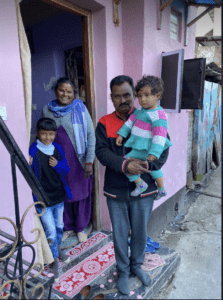 Students play a game of pictionary to reinforce the vocabulary which they just learned from the story.
Students play a game of pictionary to reinforce the vocabulary which they just learned from the story.
Episode 5: Students see a powerpoint presentation on Ghar, mera ghar.pptx, presented by the teacher. Students review the terms used for objects in the specific rooms and familial or kinship terms. Students are given a task to write down 5 phrases about a house in Nainital including: possessive pronoun, adjective and noun. Examples: मेरी लाल कुर्सी, तुम्हारा बड़ा घर, सीढ़ीनुमा घर
After this students will substitute the pronoun in the 5 phrases with a kinship word +का/के/की Examples: दादा की लाल कुर्सी, नानी का बड़ा घर
Episode 6: Students are introduced to what activities family members do in every room in a house in Uttarakhand using the habitual tense, for example,बनाती, नहाती, रखती, etc.
Students work on the google slides to answer the questions at the end of the presentation as an assignment.
Episode 7: Students in previous groups when reading the story add two to three sentences on what the family members do in a house in Nainital in which part of the house.
Performance Task: Project. My house, location and family. Students will work in pairs and distribute the responsibilities and the recording equally.
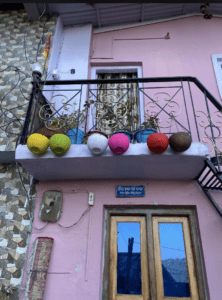 Task: Imagine your family in Nainital agreed to host an exchange student in your home in an area of your choice. You need to send a video of approximately 3-4 minutes. to that student showing and describing the house and the yard in detail using adjectives using cultural objects found specifically there, what is in the rooms and where (using postpositions), what you and your family usually do there, mention the members of the family, etc.
Task: Imagine your family in Nainital agreed to host an exchange student in your home in an area of your choice. You need to send a video of approximately 3-4 minutes. to that student showing and describing the house and the yard in detail using adjectives using cultural objects found specifically there, what is in the rooms and where (using postpositions), what you and your family usually do there, mention the members of the family, etc.
Resources: ( powerpoint has all the vocabulary and grammar we covered)
Consider the following components:
- 3+ geographical features of the surrounding area in a house in Uttarakhand (ex.,4 directions, mountain, river, forest, beach, sea, desert, etc.) (in 3+ sentences)
- 3+ objects in your room (in 3+ sentences)
- 3+ objects in your sibling’s room (in 3+ sentences)
- 3+ objects in the guest room (in 3+ sentences)
- 3 other rooms or 2 rooms + the yard (in 3+ sentences)
- 5+ activities you and/or your family do in the house, in a specific room or in the yard (in 5+ sentences)
- list 5+ members of the family who live there
Assessment Rubric:
- 3 — Exceeds Expectations: provided detailed room, furniture, activities and location information including a variety of nouns, adjectives, postpositions and verbs, and included all elements of the assigned activity.
- 2 — Meets Expectations: included some room, furniture, activities and location information including some nouns, adjectives, postpositions and verbs
- 1 — Approaches Expectation: included some room, furniture, activities and location information including a limited number of nouns, adjectives, postpositions and lacks many elements of assigned activity
- 0 — Does Not Meet Expectations: included insufficient room, furniture, activities and location information with none or almost no nouns, adjectives, postpositions and verbs.